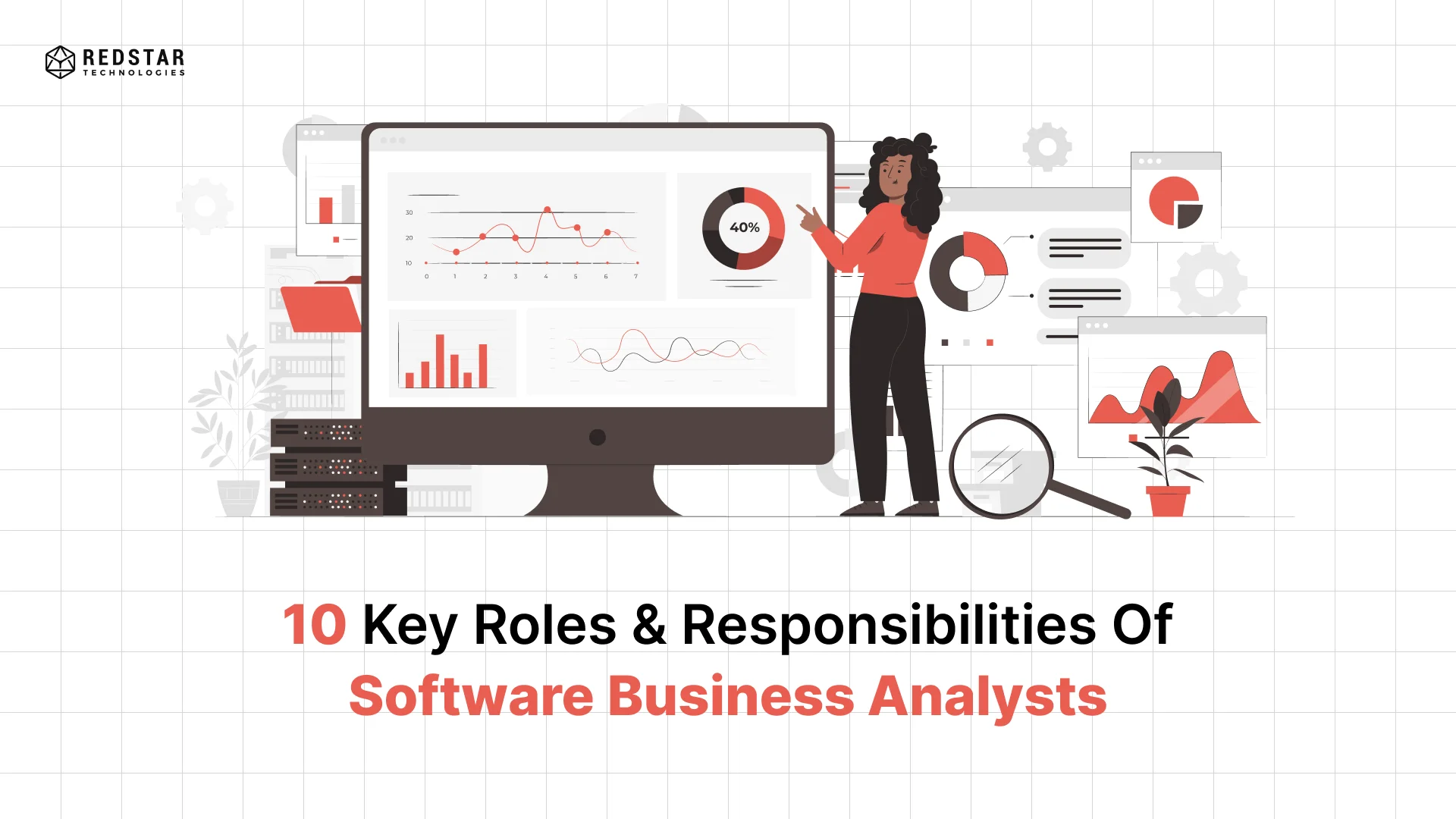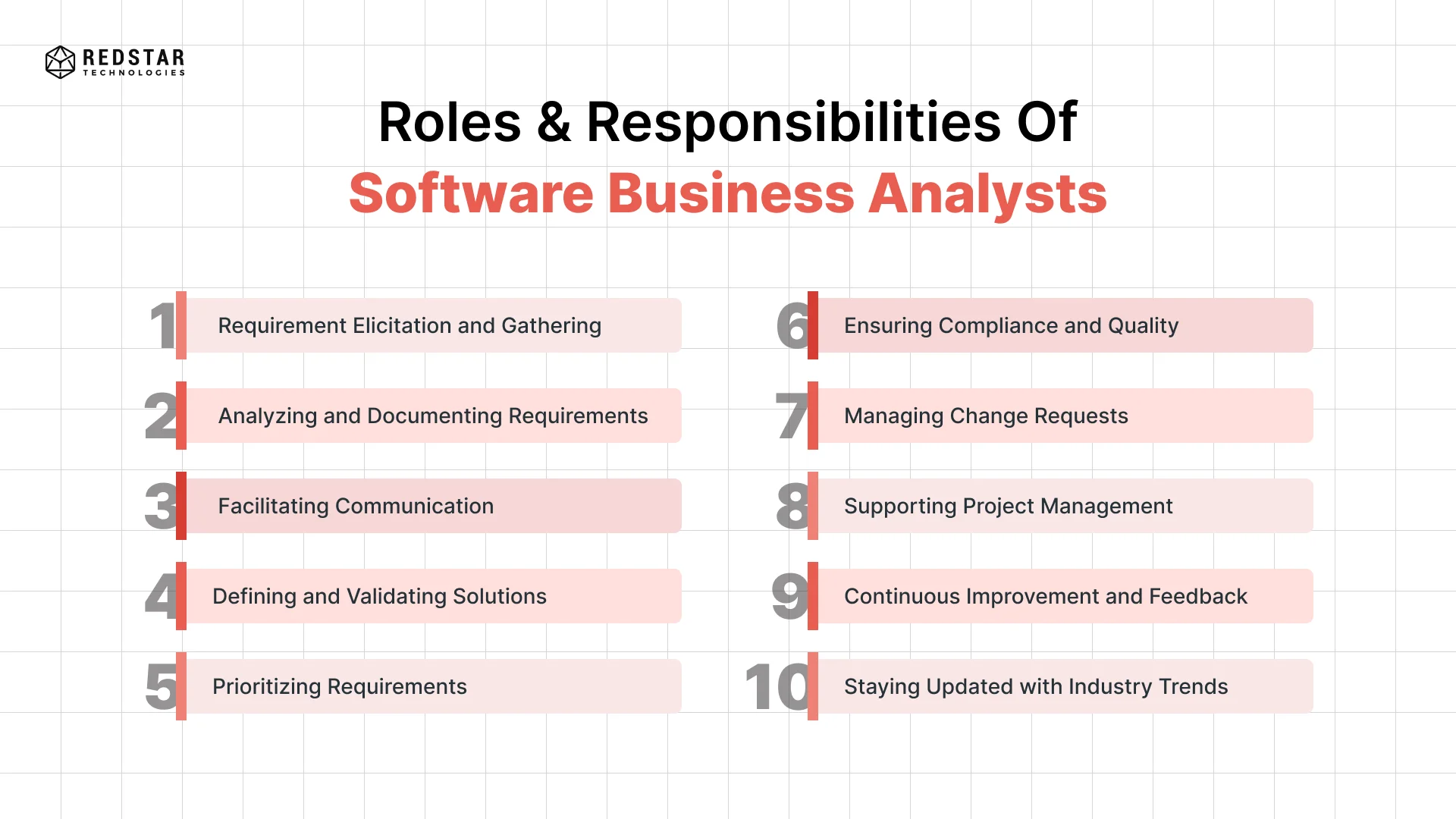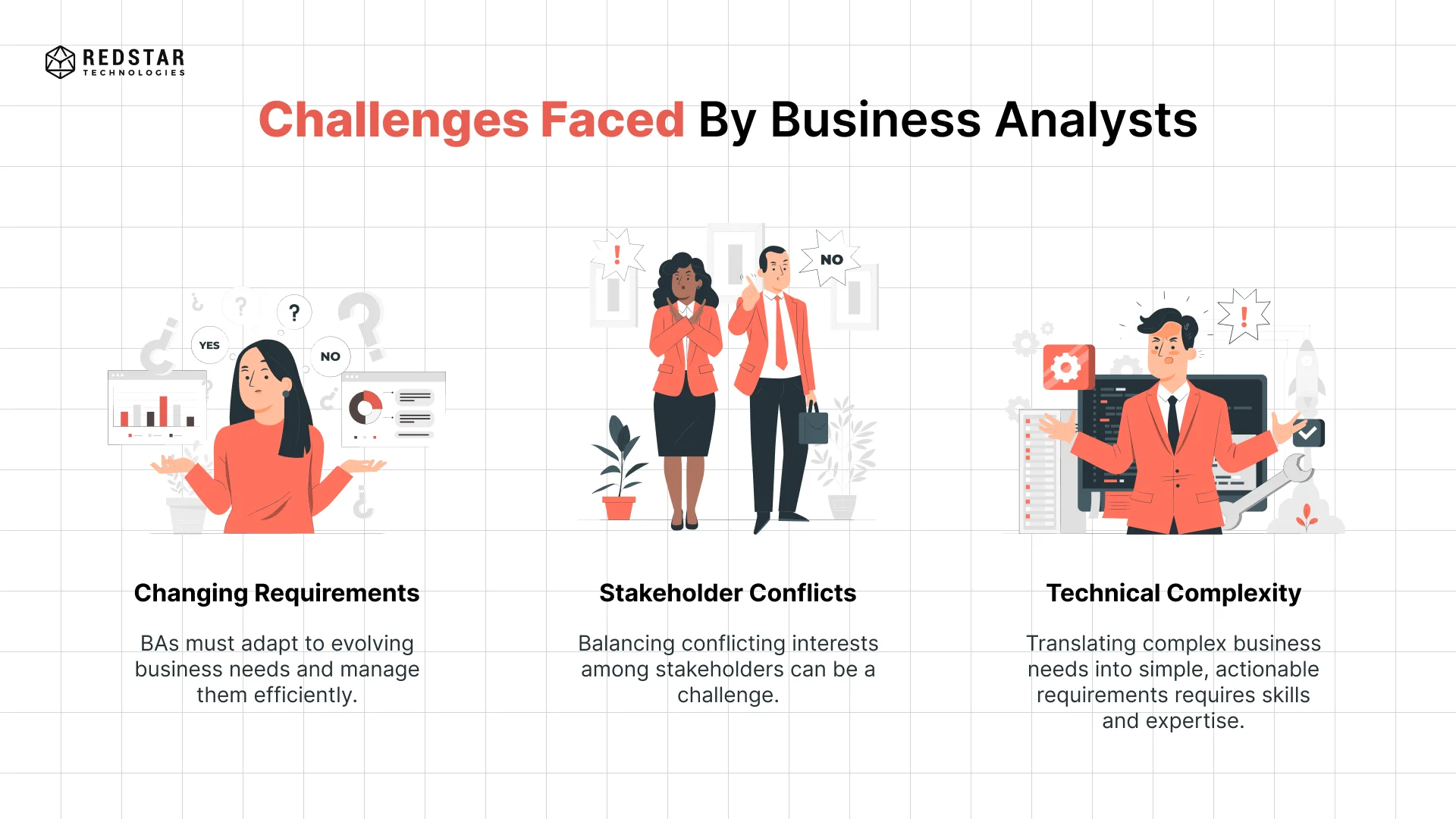
Have you ever wondered how a person not adept at coding nor at running a team can matter this much in software development? That is the business analyst. Business analysts are quiet and steady. Reading between the lines and acting as a bridge. They do not write code. Create no software. Yet , their importance and significance take a huge toll on successful delivery of a software project.
So, whenever an individual gathers requirements and writes users stories, he is acting as a business analyst. Their prime role is to translate complex software development concepts into understandable software solutions.
What is a Business Analyst?
A Business Analyst is a professional who analyzes business processes, identifies needs and recommends solutions to improve efficiency and achieve business goals. In the context of software development, BAs focus on understanding user requirements, defining system functionalities, and ensuring that the final product meets stakeholder expectations.
Importance of the BA Role in the Software Development Lifecycle (SDLC)
Software Business Analysts play an important role in the development cycle. From initiation to the end result, it is the business analyst who takes due care of everything that falls in between. Let’s understand their importance in the software development life cycle.
Planning and Initiation
Businesses need someone to explain their goals and scope and identify key stakeholders. SBAs clearly plan the direction of the project. It helps in smooth tracking of the project. Example given, you have to develop a Healthcare application. It is the business analyst who will define in what timeframe the project will be completed.
Bridging the Communication Gap
SBAs are like a middleman. They analyse, understand and explain complex technical ideas into simple language. This results in building a clear roadmap for both developers and the business stakeholders. This is so because neither developers understand the complicated business jargon nor entrepreneurs get the technical terminologies. BAs turn those jargons and terminologies into understandable language.
Reviews and Improvements
We all know that perfectionism is a myth. There is always room for improvement. And when such improvements are needed in the software, it is business analysts who take steps and help stakeholders to get what they are trying to achieve.
How do BAs contribute to the success of software projects?
Enough has been said about BAs importance and significance. Let’s understand how they contribute to the success of software projects.
Clarifying Business Needs
BAs collaborate with stakeholders to identify the root cause of the problem. They are not just dealing with surface level issues. Doing this results in developing the business-oriented solutions and planned objectives.
Enhancing User Experience
When it comes to softwares, user experience is the foremost priority. BAs develop acceptance criterias, write user stories to provide a smooth user experience.
Value-Oriented Priorities
They help prioritize features, mitigate risks, and provide the final product that delivers value to the business.
Top 10 Key Roles and Responsibilities of Software Business Analysts
Beside integrating business needs with technical understandings, SBAs have a lot of other roles and responsibilities. Let’s move forward to the main part of this blog

1. Requirement Elicitation and Gathering
Because they play a role of middlemen, business analysts' top-notch responsibility is to gather requirements. Not just gathering it but translating them in a way that both parties understand them clearly and without any ambiguity. For that to happen, SBAs conduct one on one interviews with stakeholders and communicative sessions.
The goal here is to clearly communicate. This helps align end results with the business needs. For example, a number of surveys, observations and prototyping are used as a technique to gather requirements.
2. Analyzing and Documenting Requirements
After gathering information, BAs analyze the information to identify patterns and insights. They ensure that the requirements gathered are complete, clear and unambiguous. They create clear documents like Business Requirements Documents (BRD) or Software Requirements Specifications (SRS).
Together these documents prove as a roadmap for all stakeholders including testers, developers and clients. For explaining complex ideas, visual tools like flowcharts and diagrams are put to disposal.
3. Facilitating Communication Between Stakeholders and Developers
BAs act as a bridge between business teams and technical teams. They explain technical details to business stakeholders in simple terms. They also explain business needs to developers in a way they can understand. This ensures everyone is on the same page.

4. Defining and Validating Solutions
Shaping the right solutions is another role of business analysts. They work closely with product owners, stakeholders and developers. The goal is to align solutions with functional needs and objectives of the business. In order to make ideas clear, SBAs implement tools like Figma, Balsamiq, or Axure to lay down their visual representation.
Together these documents prove as a roadmap for all stakeholders including testers, developers and clients. For explaining complex ideas, visual tools like flowcharts and diagrams are put to disposal.
5. Prioritizing Requirements
This done, they move forward to reviewing, analysing and walkthrough with stakeholders to validate the solution. As a result, each validation reduces the risk of costly rework and reinforces total alignment.

6. Ensuring Compliance and Quality
BAs make sure the software meets industry standards and regulations. They collaborate with QA teams to define test cases and acceptance criteria. This ensures the final product is high quality and meets user needs. They ensure compliance with regulations such as GDPR (General Data Protection Regulation) and HIPAA (Health Insurance Portability and Accountability Act).
7. Managing Change Requests
Change is inevitable. Clients may ask anything to change at any given stage of development. Once arises, the SBA thoroughly analyses the change impact. He may consider factors like overall impact, scope, budget and timeline. This helps SBAs make informed decisions. They also lead the process by collaborating with product owner, testers and developers.
8. Supporting Project Management
BAs help project managers with planning and execution. They assist in risk management, resource allocation, and timeline estimation. In Agile projects, they assist with sprint planning, backlog refinement, and user story definition. This ensures the project runs smoothly.

9. Continuous Improvement and Feedback
After the software is launched, BAs gather feedback from users. They identify areas for improvement and suggest changes. This helps make the software better over time. They ensure that projects evolve to meet changing business needs.
10. Staying Updated with Industry Trends
BAs continuously learn about new technologies, tools, and methods. They attend webinars, read blogs, and get certifications like CBAP or CCBA. Staying updated helps them deliver better solutions. It also keeps them relevant in a fast-changing industry.
Key Challenges Faced by Business Analysts

Here are the challenges that SBAs may encounter during the process
Unclear or Evolving Requirements
More often than not, stakeholders are unsure about what they need. This poses a challenge to the project’s scope and viability. Or sometimes, changes may be demanded amidst projects hence hindering the smooth project life cycle. That is why BAs must be adaptive to changes or unclear requirements. This can be done only by implementing the best eliciting approaches and techniques.
Communication Gaps Between Business and Technical Teams
You may know that technology has its own terminologies and so does the business domain. Misunderstandings may occur when both developers and clients could not understand each other's domain key concept. For instance, if the client does not know what API integration means, this would cause confusion on both ends. It is the responsibility of a business analyst to bridge this communication gap between both parties.
Conflicting Stakeholder Interests
All stakeholders have different competing goals. They may have a whole different interpretation of what the software would achieve.
Limited Access to Stakeholders
Moving forward, the stakeholder’s engagement and time constraints can be another challenge to business analysts. Apparently, when requirements are not elicited for whatever reasons, there will be difficulty in delivering the quality product.
Technical Complexity
Translating complex business needs into simple, actionable requirements requires skills and expertise.
Conclusion
Software Business Analysts are vital for successful software projects. They connect businesses and technical teams, ensuring solutions meet business goals and user needs. By managing requirements, improving communication, and driving progress, BAs add significant value to organizations.
Whether you’re a stakeholder, developer, or aspiring BA, understanding these roles helps you appreciate their importance.
FAQs
What skills are essential for a Software Business Analyst?
Key skills include communication, analytical thinking, problem-solving, requirement gathering, and knowledge of tools like JIRA, Confluence, and UML.
What is the difference between a Business Analyst and a Project Manager?
While both roles focus on delivering value, BAs primarily focus on requirements and processes, whereas Project Managers oversee the overall product execution and delivery.
What tools do Business Analysts use?
Common tools include JIRA, Trello, Microsoft Visio, Lucidchart, and Confluence for documentation and collaboration.
Why is stakeholder management important for BAs?
Stakeholder management ensures that all parties are aligned, reducing conflicts and ensuring that the final product meets business needs.
What is the main role of a system analyst in the developmental cycle?
What is the main role of a system analyst in the developmental cycle?



















